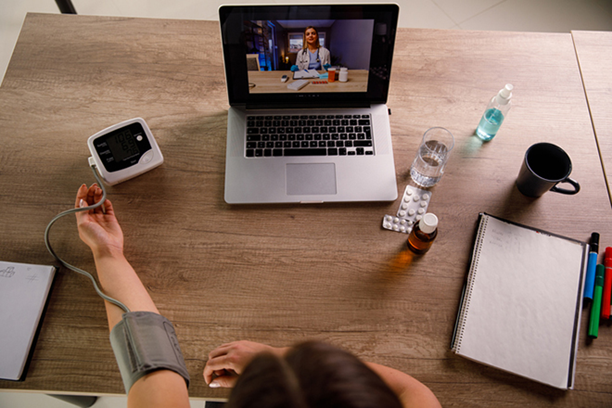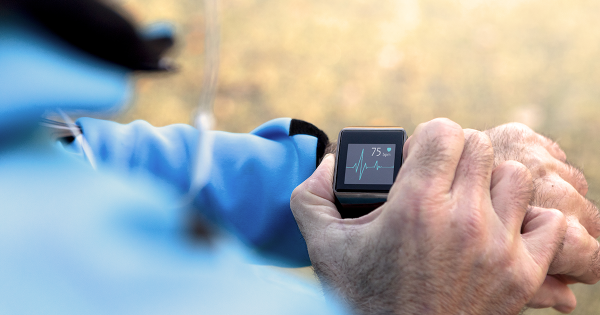Health
How Does Technology Help Health at Home?

Technology plays a growing role in providing the best possible care as home health care gains popularity. Home care providers now have more options than ever before, including home monitoring systems that notify medical staff of changes in a patient’s condition and specialized vagus nerve stimulators designed to improve overall health.
We will examine some of the most modern home healthcare technologies currently available and how they can assist patients in receiving the best possible care in their own homes in this article.
Stimulation of the vagus nerve as a home remedy:
Vagus nerve stimulation is a popular home health treatment option. The vagus nerve is stimulated using this method by placing electrodes around the patient’s neck. This can help alleviate pain, anxiety, and depression.
Home monitoring systems, or VNS devices, are frequently used in conjunction with VNS devices to monitor a patient’s vital signs and notify medical professionals of any abnormalities.
This is yet another tool that healthcare professionals can use to provide patients with medical solutions in the privacy of their own homes. The user is the one who is going to benefit the most from such a device. If other treatments haven’t worked, many people think it’s worth a try.
You should be able to get advice from your doctor or nurse about the best equipment and features for your condition. You will need to realize that there is essentially a chance of treating what you are experiencing.
Services for home health care:
In addition, physical and occupational therapy can be provided at home by some home care providers. This helps people who have mobility issues and find it difficult to leave the house. With the help of technology like this, home healthcare providers can tailor treatments to each patient’s specific requirements.
Many side effects are better controlled with home treatment. Patients who may have put off seeking treatment because of “white coat syndrome” or a fear of doctors and the medical environment are encouraged to do so by this.
Technology for smart homes:
This kind of technology additionally works with patients observing from distant areas. Mobile apps and home monitoring systems are examples of smart home technologies that can monitor a patient’s vital signs and notify medical professionals when a patient’s condition deteriorates.
Additionally, temperature and oxygen levels can be tracked by home monitoring systems, enabling home care providers to quickly identify potential health issues in their patients. People who live in rural areas or are unable to easily get to a hospital can benefit greatly from these systems.
There is no reason why this cannot be extended to something healthier, as there is more that can be accomplished at home than ever before. For instance, central air (warming, ventilation, and cooling) frameworks further develop air quality by eliminating dust aggravations that can intensify respiratory circumstances like asthma.
Services in telemedicine:
Home medication systems, which ensure patients are taking their medications, and home telemedicine services, which enable patients to receive medical advice remotely, are two additional technologies in home care.
It is importantly more productive for doctors to assess a few patients remotely when it is feasible to clarify some things and notice from a distance for a legitimate finding.
Conclusion:
To select the most suitable technology for their patients, home healthcare providers need to comprehend the various options presented by the many potential home healthcare technologies. By understanding the advantages and impediments of home health technology, medical services suppliers can guarantee that patients get the most ideal consideration from home.
-

 Entertainment2 years ago
Entertainment2 years ago“Haha aku terhibur la tengok Aqish tu, banyak makan gula ni” – Netizen
-

 Entertainment2 years ago
Entertainment2 years ago“Selamat pengantin baru Sherry, tak jemput pun” – Netizen
-

 Entertainment2 years ago
Entertainment2 years ago“Satu family kena gula2 ke camne ni hahaha” – Netizen
-

 Entertainment2 years ago
Entertainment2 years ago“Sherry memang yg kawan baik, kawan jtuh gelak dulu baru tolong hahaha” – Netizen
-

 Entertainment6 months ago
Entertainment6 months ago“Arwah adik saya memang tak pernah jumpa Wani, Kami kenal Wani pun masa dia dah takde” – Kakak Mustaqim
-

 Entertainment2 years ago
Entertainment2 years ago“Anisha sangat elegan, dia selalu tersenyum” – Netizen
-

 Entertainment2 years ago
Entertainment2 years ago“Kakak Ameerah Bolkiah, happy birthday, miss you” – Anak Azrinaz Mazhar Hakim
-

 Entertainment2 years ago
Entertainment2 years ago“Dah berumur pun cantik, macam Amy Mastura” – Netizen







